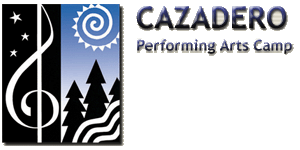Lesson Plan
38: Ferns
First posted June 26, 2004 Last
updated July 27, 2004
( Grade Level 9-12)

Remember these points from the Lesson
Plan Homepage:
(1) These lesson plans are not rigid requirements,
but a starting point for the Nature Counselor's
plan for teaching a particular day's experience.
(2) The activity should be fun and emphasize
active learning on the student's part: ask a
question, don't just state a fact.
(3) You should employ hands-on as much as possible.
(4) Plan each session to also allow time for
making entries in the Nature
Journal. |
Prior to the
session
(1) Review the section on the Ferns.
This lesson needs a bit of preparation, since most of
us know very little about ferns.
(2) Explore around Camp to know where you can find some
bracken ferns, goldenback ferns, California polypody,
and western chain ferns. If you are not going to go
out of the central area of Camp, you will have to collect
some fronds of the other ferns.
(3) The students should have previously done the Session
on the Four Groups of Land Plants., and all should know
and write in their books the facts in the Fern Basic
Facts section.
Session
(1) Start with walking around camp, observing various
types of living things. Review the Five Kingdoms of
Life and the Four Groups of Land Plants. Be sure to
have them look at members of each of the groups.
* Where does the Plant Kingdom fit in? (Photosynthesis
and therefore usually green, do not eat like an animal,
do not absorb their food like fungi, multicellular.)
* Go over the Five Kingdoms and the Four Groups of
Land Plants.
* Ask them to point out the ferns. Can they find more
than one? Describe the fern that they see.
(2) Find an area where they will be comfortable and
yet have access to some examples.
* Examine the fern. You may want to dig up a rhizome
of a sword fern.
* Discusss the parts of a fern (rhizome, stalk, frond,
pinna, sori). Discuss how they are different from
flowering plant parts (eg, a rhizome is not a root,
it is more like a bulb or a potato; a spore is not
a seed).
* Examine the sori, discuss briefly how a spore is
like and unlike a seed.
(3) Discuss the environmental requirements of a fern.
* Light. Why are the light conditions so low? Do
you see any ferns growing out in direct sunlight?
* Moisture. How much moisture do ferns need? Is there
such a thing as too much water? Do ferns grow in the
streambed?
* What competes with the ferns?
(4) Collect some fern fronds from inconspicuous places
in Camp, where their loss will not be obvious. Tape
a fern frond in the Journal. Draw the fern, including
top and bottom of the leaf. Try to get the pinnate arrangement
correct.
(5) Try to time the lesson so that you have time to
examine a second fern.
* How are the two ferns different? Same?
* Draw the second fern (we probably don't have enough
of anything other than sword and bracken to collect,
so be careful).
(6) Review some Basic Fern Facts, and have them record
them in their books.
* Ferns are vascular land plants without seeds or
flowers.
* Ferns propagate by spores.
* Important fern parts are rhizomes, fronds, sori,
and spores

References
The San
Francisco State Department of Geology has
a great section on sword ferns.
The USGS
has a section on ferns and their allies,
with good photographs.
The American
Fern Society has a website.
Back to the Lesson
Plan Homepage
|

